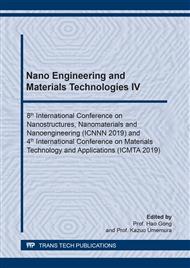p.250
p.256
p.262
p.267
p.272
p.277
p.283
p.291
p.296
Modeling of Polymeric Liquid Material Properties Effect on Pressure Transients in the Elastic Pipe
Abstract:
Material properties of polymeric liquids are of great importance for different technological processes. Particularly, such liquids demonstrate viscoelastic behavior in non-stationary transportation regimes, widely used in polymer processing, which influence the operation of the equipment. The paper is devoted to the modeling of pressure transient in a long thin-walled elastic tube with polymeric liquid. As distinct to previous results of the authors, material properties of the liquid are described by generalized Maxwell rheological equation accounting for a spectrum of relaxation times. It is supposed that the pressure pulse is generated at the tube end and propagates along the waveguide with the speed influenced by the tube geometry and wall elasticity, and the liquid compressibility and viscoelasticity. The problem is formulated in a quasi-one-dimensional approximation and solved by the operational method. The resulting relation for the pressure in the wave is inverted numerically. Effect of liquid relaxation time distribution on the pressure pulse propagation is studied. The results are relevant for the dynamic operation of equipment for polymer processing; they can be useful also for material characterization of high-molecular liquids.
Info:
Periodical:
Pages:
272-276
Citation:
Online since:
May 2020
Authors:
Price:
Сopyright:
© 2020 Trans Tech Publications Ltd. All Rights Reserved
Share:
Citation:


